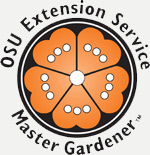Home
Who we are
What we do
Resources
- Online Resources
- Frequently Asked Questions
- OSU Gardening Encyclopedia
- OSU Gardening Calendar
- 10–Minute University™
Community & Urban Horticulture
MG Community
- MG Referral Forum
- Moodle
- Newsletter
- Forms
- Office Info Binder
- Contacts
- CERVIS Instructions
- CERVIS Event Registration
- CERVIS Administrator Login

OSU Gardening Calendar
September
Maintenance and Clean Up
- Dampwood termites begin flying late this month. Make sure your home is free of wet wood or places where wood and soil are in contact.
- Recycle disease-free plant material and kitchen vegetable and fruit scraps into compost. Don't compost diseased plants unless you are using the "hot compost" method (120° to 150°F).
- Harvest winter squash when the "ground spot" changes from white to a cream or gold color.
- Pick and store winter squash; mulch carrot, parsnip, and beets for winter harvesting.
- Protect tomatoes and/or pick green tomatoes and ripen indoors if frost threatens.
- Reduce water on trees, shrubs, and vines east of Cascades to harden them off for winter.
- Stake tall flowers to keep them from blowing over in fall winds.
- Dig, clean, and store tuberous begonias if frost threatens.
- Harvest potatoes when the tops die down. Store them in a dark location.
- Optimal time for establishing a new lawn is August through Mid-September.
- Aerate lawns.
- (Early-September): Apply 1 lb. nitrogen per 1,000 sq.ft. to lawns. Reduce risks of run-off into local waterways by not fertilizing just prior to rain, and not over-irrigating so that water runs off of lawn and onto sidewalk or street.
- Willamette Valley: Stop irrigating your lawn after Labor Day to suppress European crane fly populations.
Planting/Propagation
- Divide peonies and iris.
- Plant or transplant woody ornamentals and mature herbaceous perennials. Fall planting of trees, shrubs and perennials can encourage healthy root growth over the winter.
- Plant daffodils, tulips, and crocus for spring bloom. Work calcium and phosphorus into the soil below the bulbs at planting time. Remember when purchasing bulbs, the size of the bulb is directly correlated to the size of the flower yet to come in spring.
- Western Oregon: plant winter cover of annual rye or winter peas in vegetable garden.
Pest Monitoring and Management
- Apply parasitic nematodes to moist soil beneath rhododendrons and azaleas that show root weevil damage (notched leaves).
- Control slugs as necessary. Least toxic management options for slugs include barriers and traps. Baits are also available for slug control; iron phosphate baits are safe to use around pets. Read and follow all label directions prior to using baits, or any other chemical control.
- Monitor trailing berries for leaf and cane spot. Treat if necessary.
- As necessary, apply copper spray for peach and cherry trees.
- Spray for juniper twig blight, as necessary, after pruning away dead and infected twigs.
- Coastal and western valleys: spray susceptible varieties of potatoes and tomatoes for early and late blight.
Houseplants and Indoor Gardening
- Clean houseplants, check for insects, and repot and fertilize if necessary; then bring them indoors.
Download a PDF of the September Calendar for easy printing.
Updated October 2, 2009.
Problems, questions, or suggestions? Contact: webmaster@metromastergardeners.org

